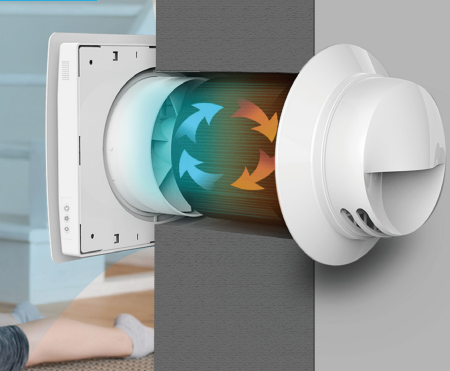HRV Made Easy: What You Need to Know
Wiki Article
The All-Inclusive Overview to the Uses of Heat Recovery Ventilation in Modern Structures
Heat Recovery Ventilation (HRV) systems stand for a substantial development in developing technology (HRV Heat Recovery Ventilation). They supply a technique for trading stagnant interior air with fresh outdoor air while minimizing energy loss. This technique not just enhances interior air high quality however also adds to power performance in both property and business buildings. Comprehending the numerous applications and advantages of HRV can disclose its essential duty in contemporary design and sustainability efforts. The implications of this technology are worth discovering additionallyComprehending Heat Recovery Ventilation Equipments

Several modern-day structures prioritize energy performance, comprehending heat recovery air flow (HRV) systems is crucial for optimizing interior air top quality and decreasing energy usage. HRV systems function by transferring heat from stale indoor air to incoming fresh air, efficiently preserving comfortable interior temperature levels while lessening energy loss. These systems contain a heat exchanger, followers, and ductwork that facilitate the flow of air. Throughout wintertime, HRV units record and recycle warmth from the outgoing air, while in summertime, they can help cool down incoming air. By continuously trading air, HRV systems also decrease humidity and the focus of interior contaminants. Appropriate installation and upkeep of HRV systems are necessary for their efficiency and performance in enhancing total building performance and convenience.
Benefits of Heat Recovery Ventilation
Heat recovery ventilation systems offer numerous advantages that improve both power effectiveness and indoor air high quality in contemporary structures. By catching and recycling energy from exhaust air, these systems considerably minimize cooling and heating costs, bring about lower energy usage. In addition, they maintain a steady circulation of fresh exterior air, decreasing the threat of indoor air toxins and allergens. This continual exchange assists manage moisture levels, avoiding mold development and making certain a healthier living environment. In addition, HRV systems add to sustainability goals by lowering total carbon impacts. Their capability to maximize ventilation without sacrificing thermal convenience makes them an important addition to contemporary building layout, advertising both financial and environmental advantages.Applications of HRV in Residential Buildings
As homeowners significantly focus on energy effectiveness and indoor air top quality, the applications of warm recovery air flow (HRV) systems in domestic structures have actually come to be much more widespread. HRV systems are especially helpful in snugly secured homes, where keeping fresh air circulation is crucial for stopping moisture build-up and indoor contaminants. They effectively transfer warmth from outgoing stale air to incoming fresh air, lowering energy prices connected with heating & cooling. Additionally, HRVs can improve convenience degrees by controling moisture and temperature level. They are also versatile for various property styles, including single-family homes and multi-unit buildings. On the whole, incorporating HRV systems sustains sustainable see here now living techniques while making certain a much healthier interior atmosphere for occupants.HRV in Business and Industrial Setups
In industrial and industrial settings, the implementation of warmth recuperation air flow (HRV) systems has come to be progressively crucial for optimizing energy effectiveness and preserving air quality. These systems properly transfer warm from exhaust air to go to this web-site inbound fresh air, decreasing the demand for extra home heating or cooling. This not just decreases power prices however also adds to sustainability campaigns. Industries such as production, warehousing, and office buildings profit substantially from HRV systems, as they assist manage temperature and humidity degrees, making sure a comfy and effective setting. In addition, HRV systems aid in removing pollutants and excess wetness, enhancing indoor air quality. As laws around air high quality become more stringent, the fostering of HRV technology is likely to grow, making it an essential component of contemporary commercial and commercial framework.Future Trends in Heat Recovery Ventilation Modern Technology

Regularly Asked Concerns
How Does Heat Recovery Ventilation Influence Indoor Air Top Quality?
Heat recovery ventilation considerably enhances indoor air quality by constantly trading stale indoor air with fresh outdoor air while recovering energy. This process decreases contaminants, preserves perfect humidity degrees, and ensures a much healthier atmosphere for passengers.Can HRV Equipments Be Installed in Existing Buildings?
HRV systems can certainly be set up in existing structures. Retrofitting might need modifications to ductwork and ventilation designs, but it considerably boosts energy efficiency and interior air top quality, making it a practical option for older structures.What Maintenance Is Needed for HRV Systems?

Exist Details Climates Where HRV Is A Lot More Efficient?
Heat recovery ventilation systems are especially effective in environments with considerable temperature level differences between periods. These systems optimize energy performance by recuperating warmth from exhaust air, making them optimal for both cool and moderately cozy settings.Just How Do HRV Equipments Affect Power Costs?

Report this wiki page